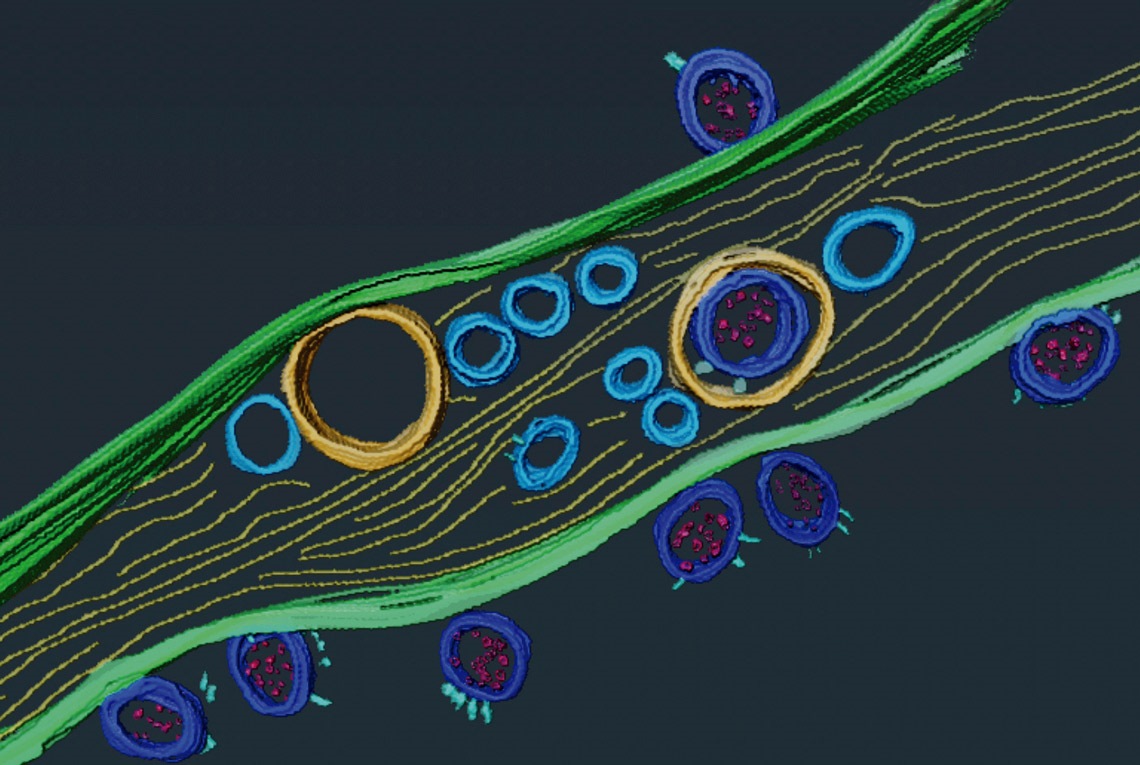How does SARS-CoV-2, the virus that causes COVID-19, penetrate neurons, which do not have the angiotensin-converting enzyme 2 (ACE-2) receptor that allows it to enter into other cells? A team from Institut Pasteur in Paris and the French National Centre for Scientific Research (CNRS) may have found an answer: the coronavirus induces the formation of nanotubes that act as a bridge between infected and uninfected neurons, allowing it to spread through the central nervous system. Using refined microscopy techniques, the researchers identified viral particles on the surface of and inside these nanotubes. Formed by the fusion of cell membranes, the nanotubes proved to be a suitable environment for the virus to multiply, since the body’s immune system does not detect them. This mechanism could explain how the coronavirus manages to travel from the olfactory epithelial cells of the nasal cavity to the olfactory sensory neurons of the central nervous system, causing a loss of smell, taste, and memory, as well as affecting concentration. Previous studies at Institut Pasteur have shown that by allowing the passage of proteins, these nanotubes can lead to the development of degenerative diseases such as Alzheimer’s or Parkinson’s (Science Advances, July 22, and Bulletin de l’Institut Pasteur, July 21).
RepublishCOVID-19
Nanobridges used by virus to infect neurons

Coronavirus (blue) inside and on the surface of nanotubes
Anna Pepe / Instituto Pasteur
